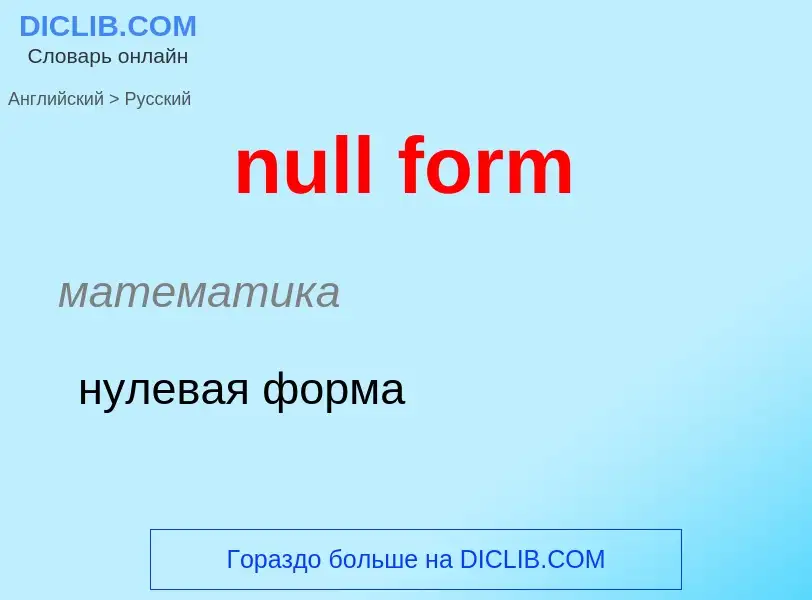Vertaling en analyse van woorden door kunstmatige intelligentie
Op deze pagina kunt u een gedetailleerde analyse krijgen van een woord of zin, geproduceerd met behulp van de beste kunstmatige intelligentietechnologie tot nu toe:
- hoe het woord wordt gebruikt
- gebruiksfrequentie
- het wordt vaker gebruikt in mondelinge of schriftelijke toespraken
- opties voor woordvertaling
- Gebruiksvoorbeelden (meerdere zinnen met vertaling)
- etymologie
null form - vertaling naar russisch
математика
нулевая форма
общая лексика
нульформа
общая лексика
пустой указатель
в программировании - ссылка на ноль. Такое значение указателя может, означать неудачный результат работы функции. Это значение часто присваивается указателю в качестве начального или значения по умолчанию
Смотрите также
Definitie
Wikipedia
In morphology, a null morpheme or zero morpheme is a morpheme that has no phonetic form. In simpler terms, a null morpheme is an "invisible" affix. It is a concept useful for analysis, by contrasting null morphemes with alternatives that do have some phonetic realization. The null morpheme is represented as either the figure zero (0) or the empty set symbol ∅.
In most languages, it is the affixes that are realized as null morphemes, indicating that the derived form does not differ from the stem. For example, plural form sheep can be analyzed as combination of sheep with added null affix for the plural. The process of adding a null affix is called null affixation, null derivation or zero derivation. The concept was first used by the 4th century BCE Sanskrit grammarian from ancient India, Pāṇini, in his Sanskrit grammar.

